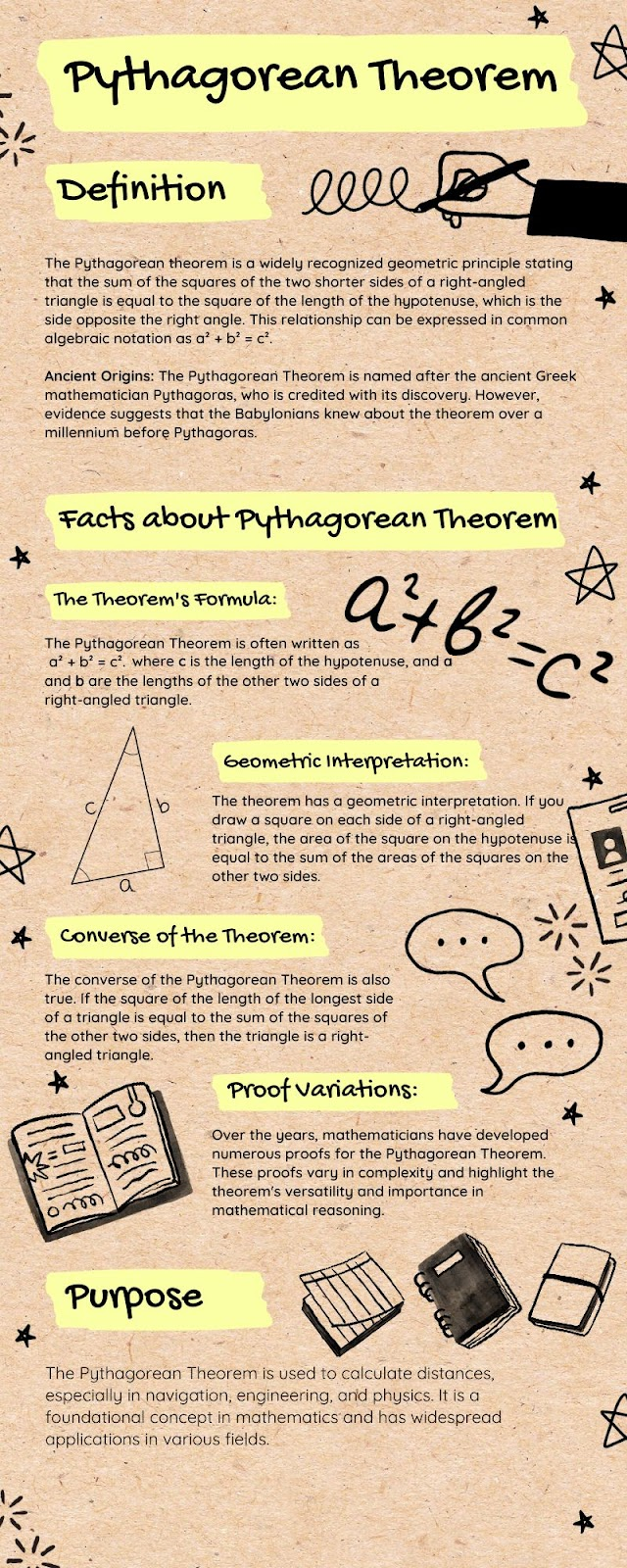Lesson by Alys Grover, Charlie McCullough, Chris Ehmann, Ehtesham Ahmed, and Joel Vaz
Overview
The Pythagorean theorem is a useful mathematical relation named after the Greek philosopher Pythagoras. The relation states:
a2 + b2 = c2
Which is true for any triangle that contains a 90 degree angle. This theory is very useful in both mathematics and also real-world problems.
Read/Watch
For further information on Pythagoras’ theorem, consider these additional resources:
How many ways are there to prove the Pythagorean theorem – Betty Fei (5 minutes) – A TED-Ed educational video that goes through the many proofs (and the history of those proofs) of Pythagoras’ theorem
History of Math: Pythagorean Theorem (1.5 minutes) – Provides some history of the Pythagorean Theorem. Not necessary for understanding, but interesting for those wanting more information.
Proofs of the Pythagorean Theorem (6 minutes) – An article explaining a few different approaches to proving the Pythagorean Theorem, including proof by rearrangement, geometric proofs, and algebraic proofs.
Fundamentals of Pythagoras’ Theorem
The infographic below covers the fundamentals of Pythagoras’ theorem:

Using Pythagorean Theorem to Solve Problems
The Pythagorean theorem is very useful in solving certain problems. To understand how to use the relation, watch the video below. The video contains interactive tools that will allow you to try solving the problems shown on your own. Alternatively, the video can also be accessed by clicking here, which contains a version of the video that has subtitles.
Now that you have been shown how to solve problems using the theorem, consider trying these activities to strengthen your understanding of Pythagoras’ theorem.
Activity One: Hands-on Activity
For this activity, you will need chalk, a measuring tape or ruler, and access to some pavement outside. Once you’ve acquired these, draw a right triangle on the pavement, and measure two of the sides of the triangle (make sure to draw large enough triangles to measure!) Using what you have learned about the Pythagorean theorem, attempt to solve for the length of the side of the triangle that you haven’t measured. Once you’ve done so, measure the unknown side using your measuring tape (or ruler). Compare this to the number you got using Pythagoras’ theorem: are they the same?
Afterwards, draw some more triangles of various sizes, and try using Pythagoras’ theorem in different ways to strengthen your understanding of it!
Activity Two: Practicing With Artificial Intelligence
For this activity, you will need access to ChatGPT. Ask ChatGPT to generate some word problems that involve Pythagoras’ theorem! These problems will have real-world application, so it will make it easier to understand the value of knowing this theorem. Attempt to solve the problems given to you by ChatGPT! Once you have received an answer, ask ChatGPT to verify the answer for you. If you’re stuck on a particular question, ask the AI to help you out. Be careful, as ChatGPT may give you the wrong answer- always verify what it tells you.
Screenshot demonstrating how you might use ChatGPT to help you learn Pythagoras’ theorem (OpenAI, 2023)
References
Brilliant. (n.d.) Proofs of the pythagorean theorem. Brilliant Math & Science Wiki. https://brilliant.org/wiki/proofs-of-the-pythagorean-theorem/
mathematicsonline. (2022, Mar. 23). History of Math: Pythagorean Theorem [Video]. Youtube. https://www.youtube.com/watch?v=frQCjo3VjjI
OpenAI. (2023, Dec. 1). [ChatGPT response to a prompt about creating word problems using Pythagorean Theorem]. https://chat.openai.com/
TED-Ed. (2017, Sept. 11). How many ways are there to prove the Pythagorean theorem? – Betty Fei [Video]. Youtube. https://www.youtube.com/watch?v=YompsDlEdtc
Leave a Reply
You must be logged in to post a comment.